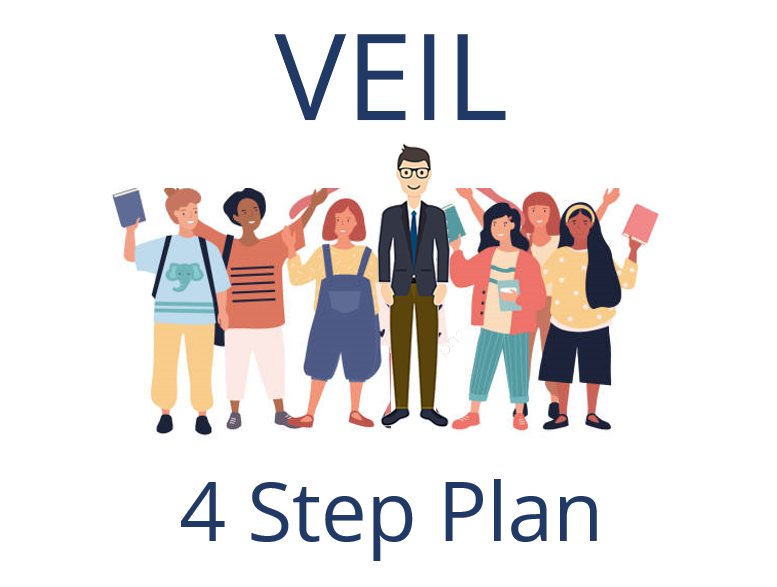

Veil: The 4 Steps to Support Pupils With Hidden Needs
STEER Education has been tracking pupils’ social-emotional development across Ys 3-13 for six years. We now track 70,000 pupils. From our data we have found 8/10 secondary age girls will now hide their needs from teachers, a rise of 30% since the pandemic. Boys have also seen a 20% rise. A crisis of hidden concerns will develop unless teachers are helped to see behind the curtain.
We have developed a four step guidance plan for schools to help them respond to this hidden pandemic under the acronym VEIL.
VEIL REMINDS US THAT THE MAJOR PROBLEMS FACING OUR PUPILS WILL BE HIDDEN FROM US UNLESS WE FIND WAYS TO HEAR THEIR HIDDEN VOICE. FOLLOW OUR FOUR STEP PLAN TO RESPOND TO THESE NEEDS.
STEP 1: VALIDATE LOSSES AND FOCUS RESOURCES
- Many pupils are anxious about what they have lost through the pandemic.
- Validate those feelings but explain how you will be putting support in place.
- Y6 pupils appear to be feeling more anxious about transition to secondary school having had so little of Y6; Y10 and Y12 pupils appear to be anxious about how much of the curriculum has been lost.
- Tip: Don’t simply focus on exam years; there is evidence that non-exam years are receiving less teacher attention and support at the moment, which is having an adverse impact.
STEP 2: EQUIP TUTORS AND ANTICIPATE CONCERNS
- Don’t mistake pupil quietness or compliance for no concern.
- Remind pupils they can contact tutors through email or confidential note.
- Train tutors to notice when their tutees’ mood, routine, or attitude changes. Using open questions or reflective comments can help pupils open up e.g. “How are you finding things at the moment? Looks like your friendship group has changed a bit this term….”
STEP 3: INVITE Y11 AND Y13 TO CONTRIBUTE POST-EXAMS
- STEER’s lockdown tracking showed that pupils’ social-emotional risks increased sharply when schools moved virtual during lockdown.
- Consider how you can extend the school provision for Y11 and Y13 after their exams rather than letting them drift at risk through long unaccompanied summer months.
- One opportunity is to invite them to train as your peer resource for Stage 4 LISTEN. Listening skills will be valuable to you, to their peers and indeed themselves and are already highly valued by employers.
STEP 4: LISTEN- BUILD PEER LISTENING INTO YOUR SCHOOL STRUCTURE
- Peer listeners maybe be more effective channels for pupils to share their concerns than to an adult.
- Consider how to make such structures more available throughout the school, in tutor times, breaks or after school.
- Consider how to build in wider peer listening training into the school from September: these needs are likely to be dominant for the next 18 months.





